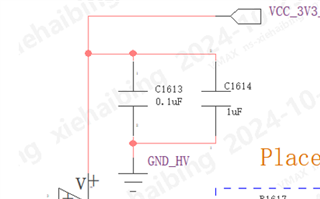Tool/software:
Hi team,
could you help to check what value is the minimum capacitor on V+ pin, from the datasheet, I see the value is 0.1uF. can we use <0.1uF capacitor(total)?

This thread has been locked.
If you have a related question, please click the "Ask a related question" button in the top right corner. The newly created question will be automatically linked to this question.
Tool/software:
Hi team,
could you help to check what value is the minimum capacitor on V+ pin, from the datasheet, I see the value is 0.1uF. can we use <0.1uF capacitor(total)?

A low-impedance connection (i.e., short traces, and a small capacitor packate) is more important than the absolute value. It is likely that 10 nF works as well as 100 nF. In practice, you would use the same value as used elsewhere on the board to simplify the BOM.
Hey Alfie,
There is not really a minimum value. Like Clemens states above, if you had a very low impedance and very clean power supply connection directly to the amplifier, then 100nF is not needed, and you can use a much smaller value. However, it is important to know the two main functions of supply capacitors. I'll provide the short list first and then go in depth on each point.
An amplifier will naturally reject ripple on the power supply (PSRR) but this will taper off at higher frequencies, and adding a supply capacitor can help the amplifier reject noise on the power supply that are outside the amplifiers PSRR attenuation range. Not having a sufficiently large capacitor on the supply pin means that
Additionally, when an amplifier is trying to change the output as fast as possible (slewing) the amplifier needs to pull current from the supply pin to do so. Long traces running from your DC/DC converter or LDO will have inductance, and when current is tried to pull from a trace with relatively large parasitic inductance, it will limit the amount of current that can be drawn from your supply. Adding a capacitor close to your device provides a storage of charge the amplifier can pull from with low impedance when it is slewing.
Best,
Jerry